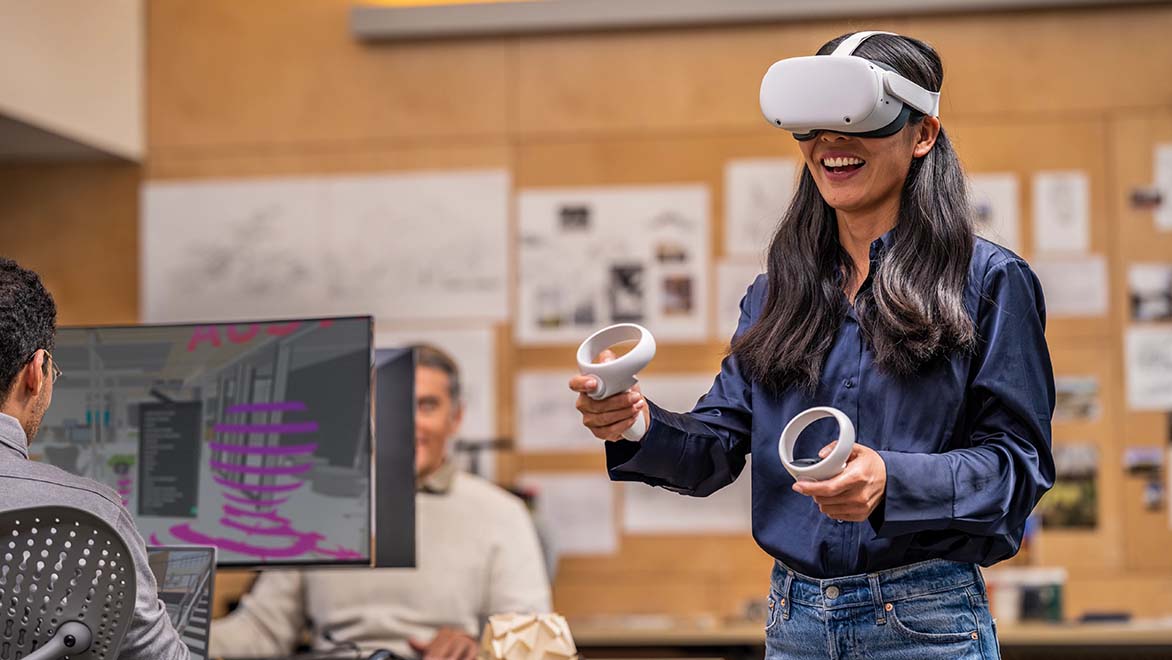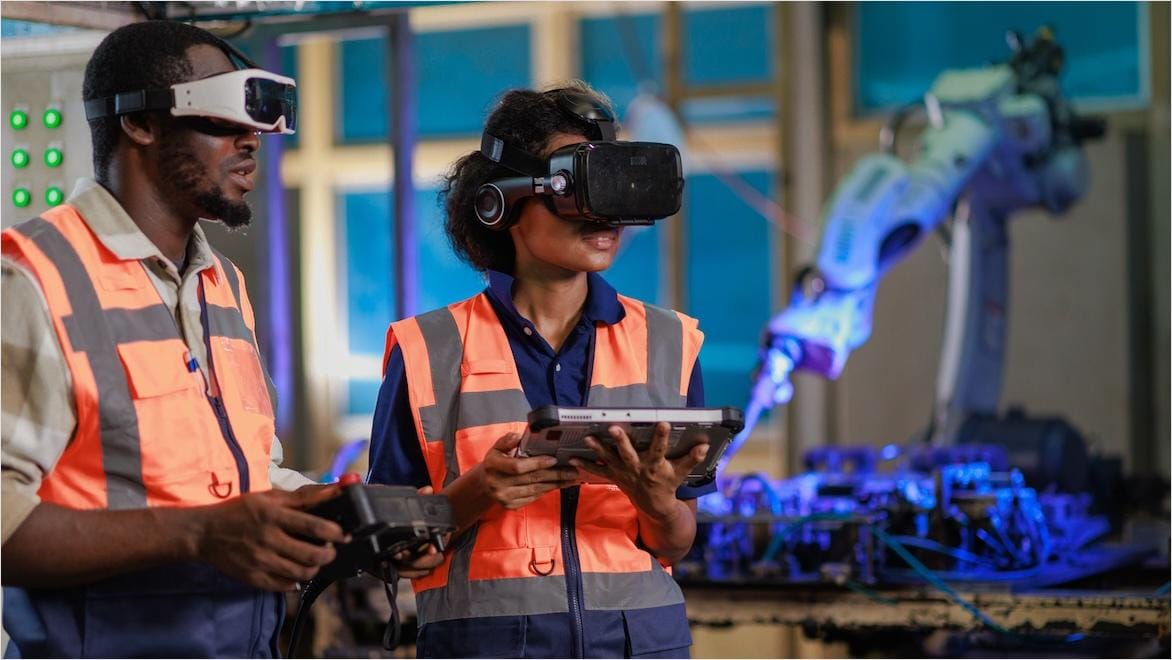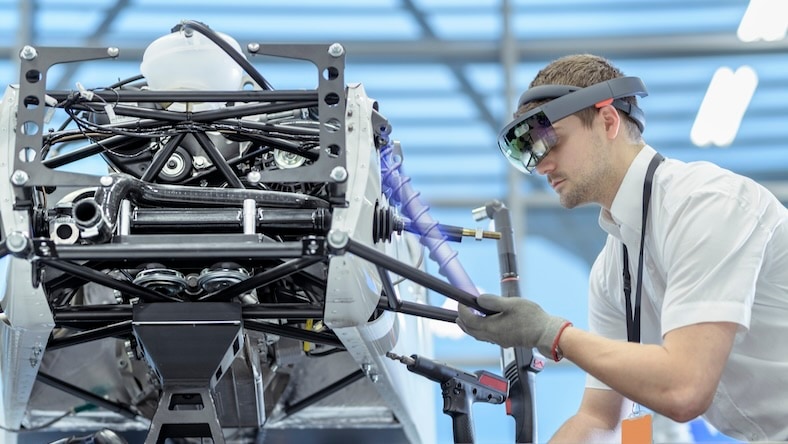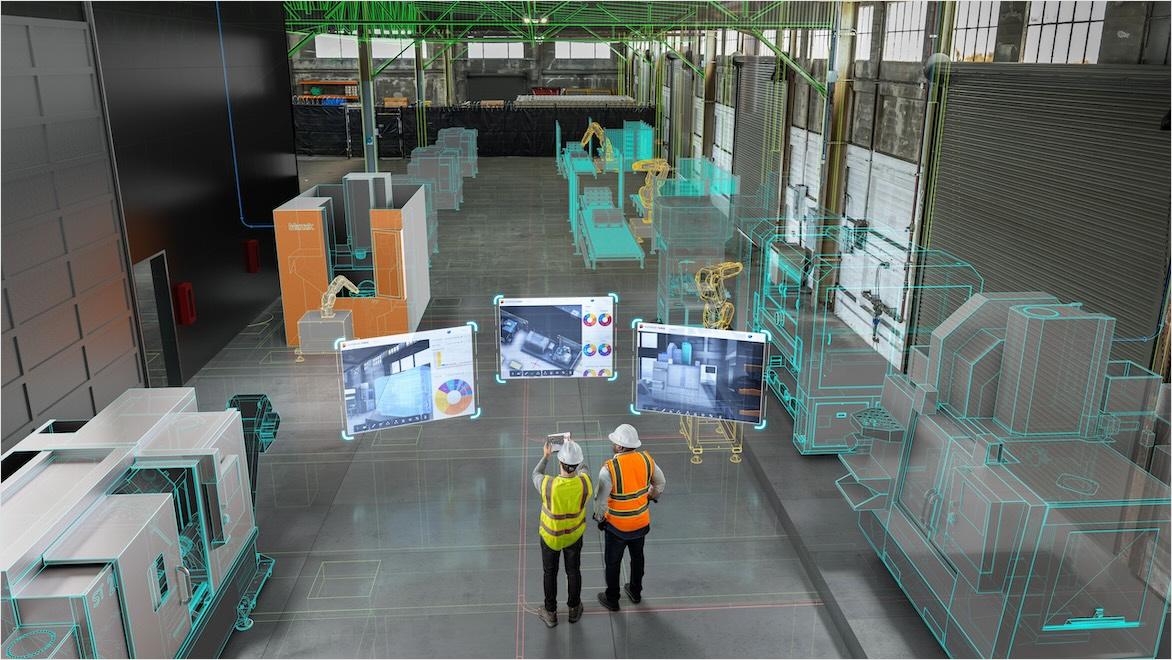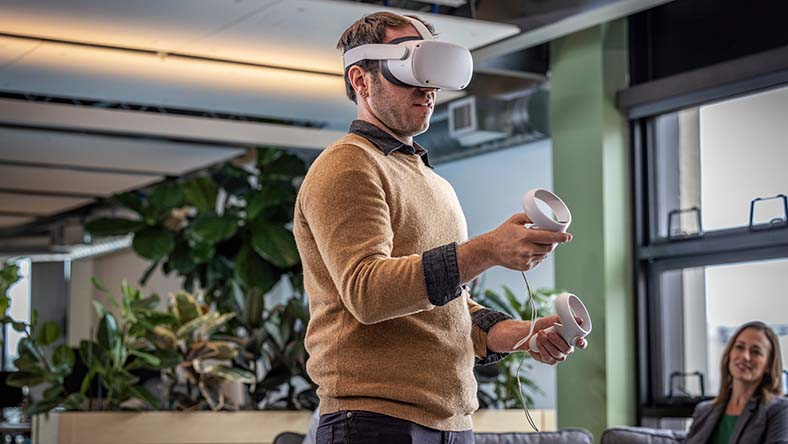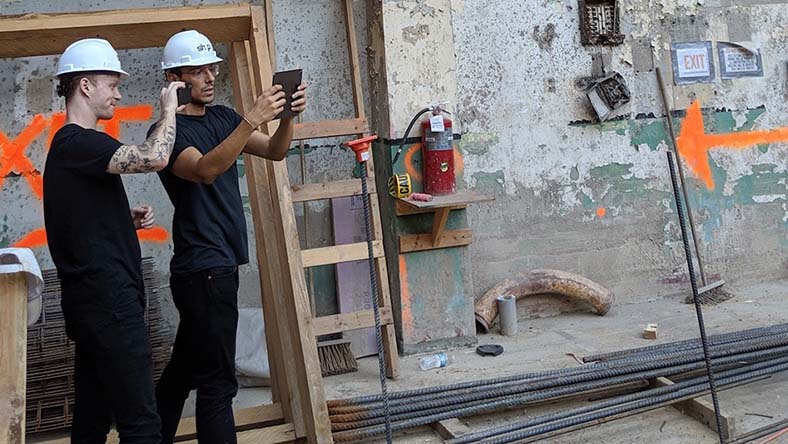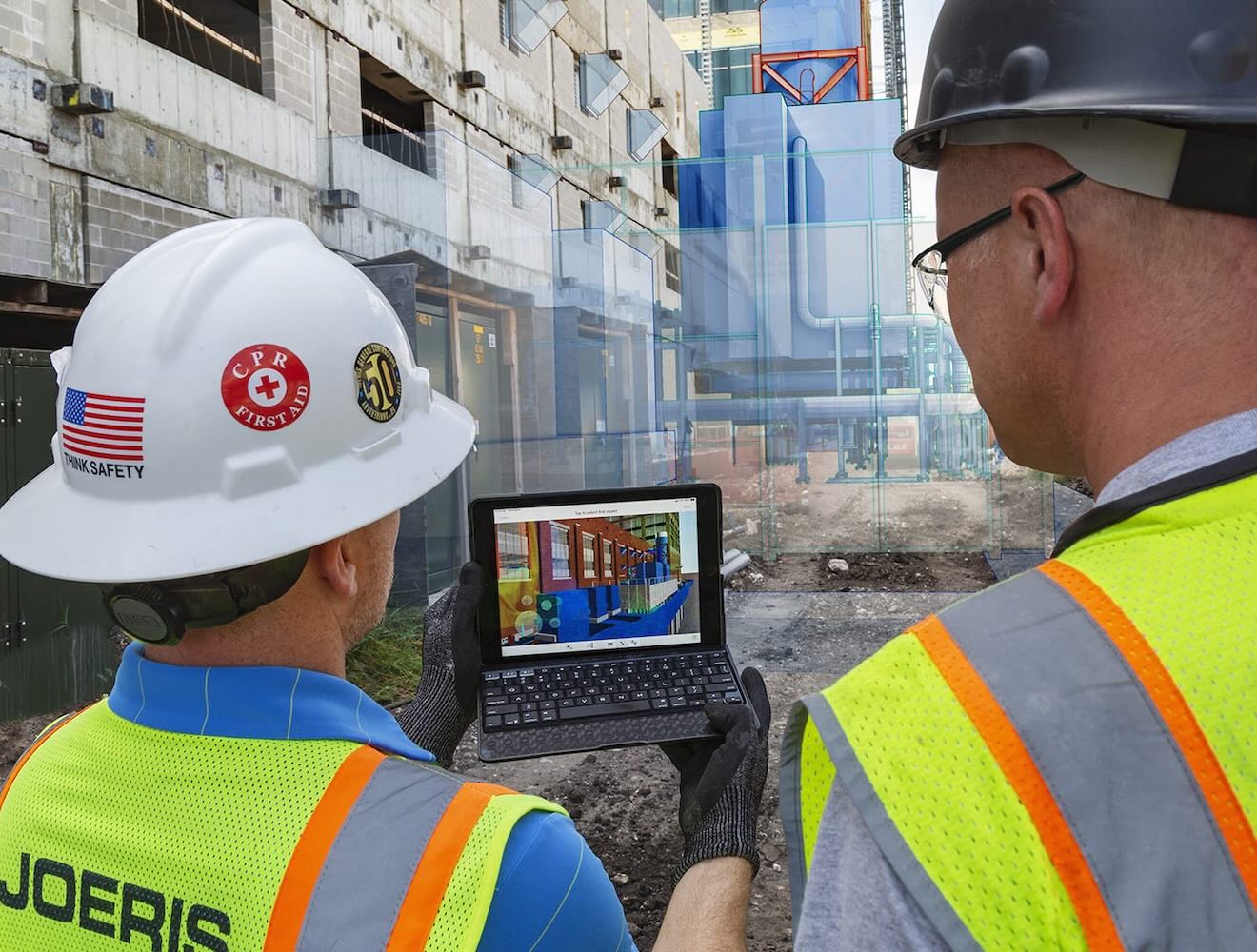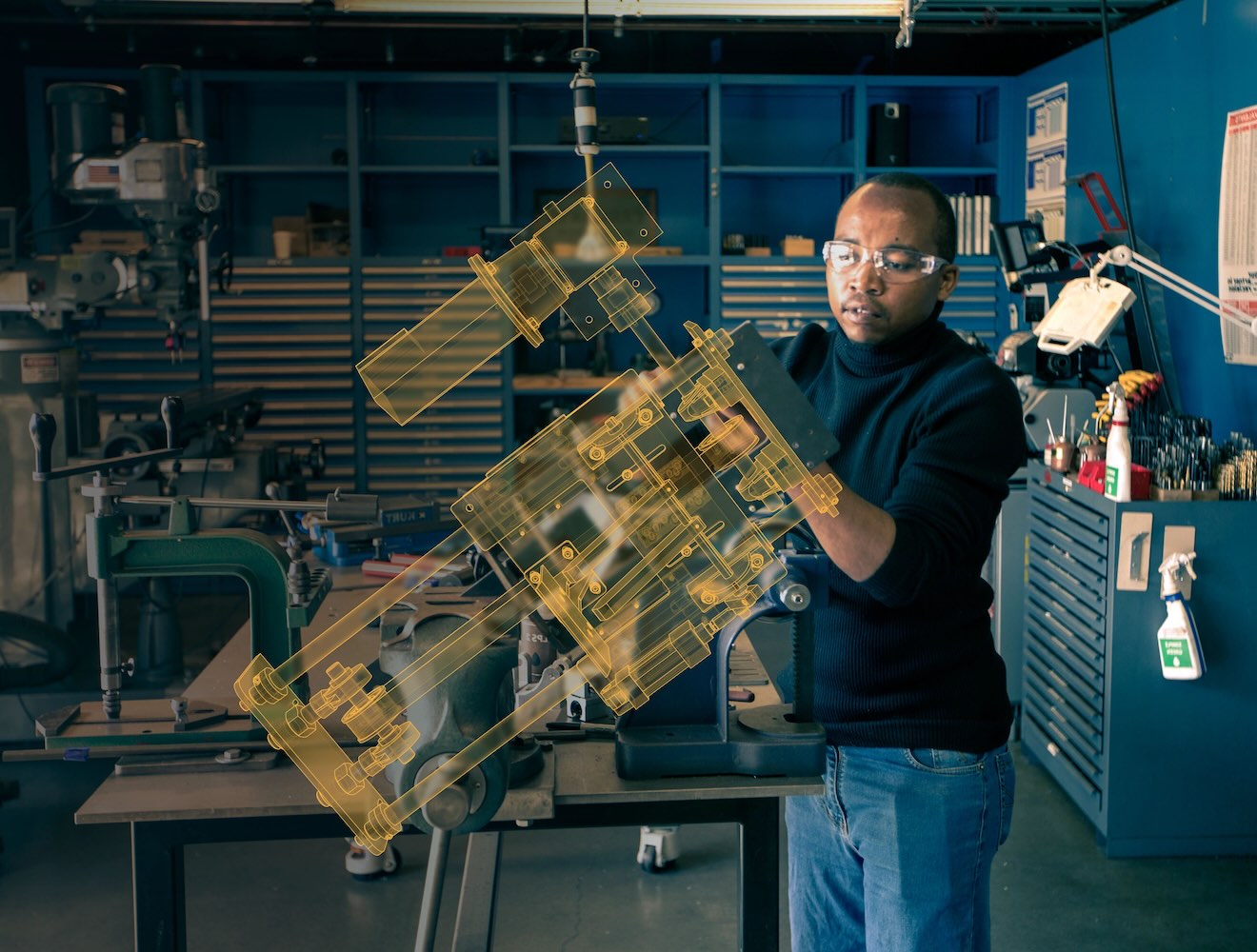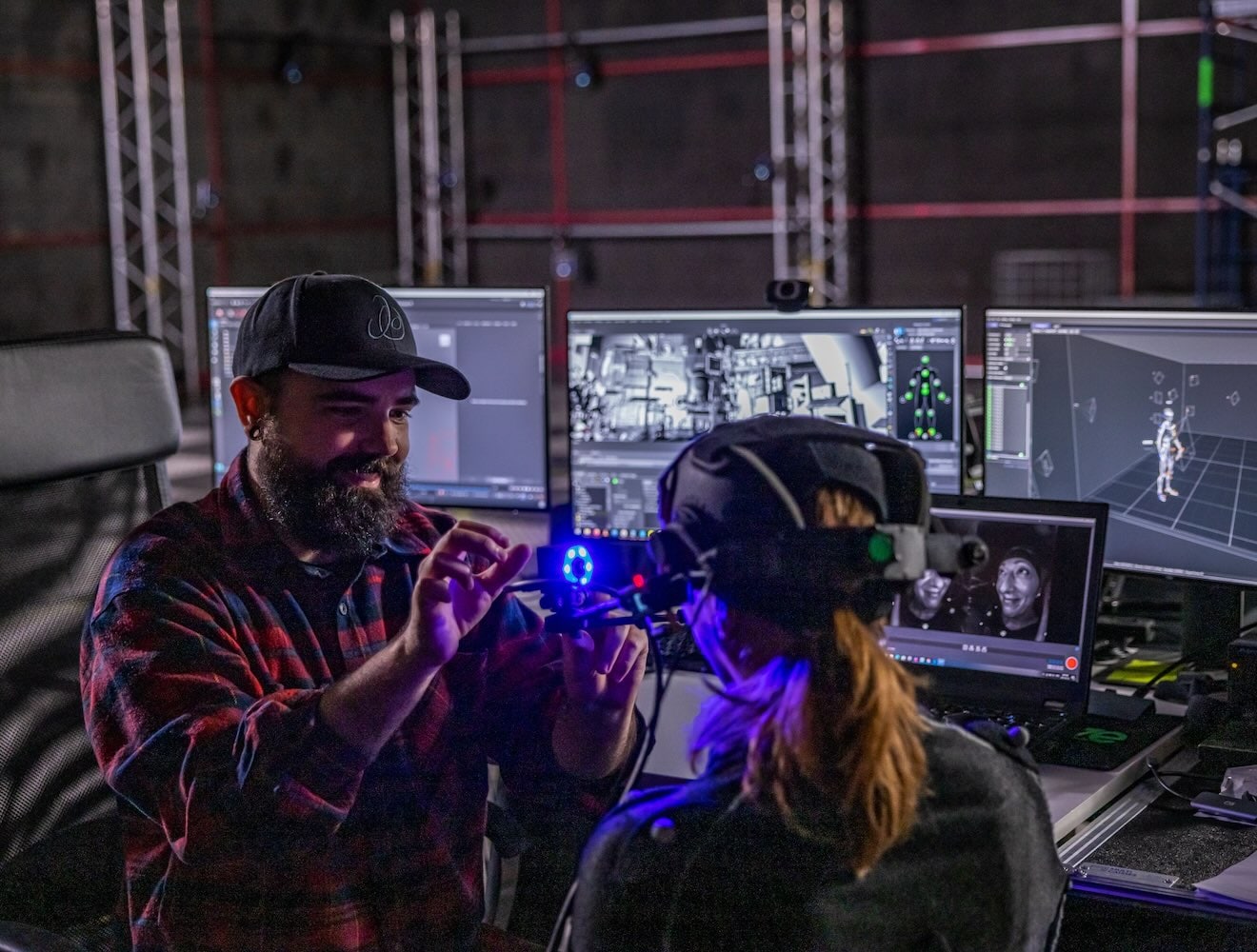& Construction

Integrated BIM tools, including Revit, AutoCAD, and Civil 3D
& Manufacturing

Professional CAD/CAM tools built on Inventor and AutoCAD
Extended reality (XR) is an umbrella term for immersive technologies that merge the physical and virtual worlds. The term XR is used to encompass virtual reality (VR), augmented reality (AR), and mixed reality (MR).
Today’s projects require broader teams and seamless collaboration in less time. At Autodesk, we believe that augmented reality (AR), virtual reality (VR), and mixed reality (MR) can play a key role in resolving these challenges. Immersive extended reality solutions can fundamentally change how people interact with their data and one another.
The journey of extended reality (XR) began with the development of virtual reality (VR) in the mid-20th century. Early attempts, like Morton Heilig’s Sensorama in the 1950s, aimed to create immersive experiences. The 1990s introduced more advanced VR headsets, but it wasn’t until the 2010s, with the release of affordable devices like the Oculus Rift, that VR gained widespread popularity. This period also saw the rise of augmented reality (AR), with apps like Pokémon GO showcasing the potential of overlaying digital information onto the real world.
Mixed reality (MR) emerged as technology advanced, seamlessly integrating physical and virtual environments. The release of Microsoft’s HoloLens in 2016 highlighted MR’s capabilities, allowing interaction with holographic objects in the real world. Critical developments in motion tracking, haptic feedback, and spatial audio have further enhanced XR experiences, expanding its applications beyond entertainment into education, health care, and industrial design.
XR continues to evolve today, driven by innovations in 5G connectivity, AI integration, and more powerful hardware. These advances are improving accessibility, reducing latency, and enhancing user experiences, promising to revolutionize various industries. The evolution of extended reality reflects significant technological progress, blurring the lines between the physical and digital realms.
Extended reality (XR) encompasses three primary technologies: virtual reality (VR), augmented reality (AR), and mixed reality (MR).
Virtual reality (VR) immerses users in a fully virtual environment using headsets like Meta Quest or HTC Vive, blocking out the real world while allowing the user to interact with computer-generated surroundings. It’s widely used in gaming, training simulations, remote collaboration, virtual entertainment, and education.
Augmented reality (AR) layers digital information onto the real world, enhancing perception without replacing reality. Accessible through smartphones, tablets, and AR glasses. Augmented reality applications range from mobile games to practical uses in navigation, retail, and education. It provides real-time information and interactive experiences.
Mixed reality (MR) combines elements of VR and AR, allowing digital and physical objects to coexist and interact in real time. The latest example of a mixed reality device on the market is the Apple Vision Pro providing both full immersion and AR experiences. Devices like Microsoft HoloLens project holograms into the user’s environment so they can interact with virtual objects as if they were real. MR is valuable in professional and industrial contexts, such as remote collaboration, construction, and medical training.
Extended reality (XR), which includes virtual reality (VR), augmented reality (AR), and mixed reality (MR), is revolutionizing the architecture, engineering, construction, and operations (AECO) industry by enhancing remote collaboration, design, and training processes. XR tools like Autodesk Workshop XR allow teams to conduct immersive, real-time design reviews, enabling remote stakeholders to explore 3D models at a 1:1 scale.
In design and manufacturing, XR enables interaction with digital prototypes and overlays for more accurate production. It also facilitates hands-on training through realistic simulations, helping professionals master complex procedures in a risk-free environment. By helping streamline workflows and reducing errors, XR transforms how professionals collaborate, design, and build.
Discover how extended reality (XR) is revolutionizing the Design and Make industries, driving innovation, efficiency, and sustainability while transforming how professionals learn, collaborate, and design.
XR delivers immersive, hands-on learning experiences through life-like VR simulations, real-time AR data overlays, and collaborative MR environments, making training more effective and impactful.
XR helps streamline complex tasks, offering real-time guidance and enabling seamless remote collaboration, breaking geographical barriers, and boosting productivity.
XR transports users into immersive worlds, from breathtaking VR environments to interactive AR gameplay and innovative MR experiences, blending physical and digital realities.
XR fosters dynamic, interactive environments that enhance engagement in education and the workplace, promoting collaboration among remote teams and driving creativity.
XR allows Design and Make professionals to experience complex project data in 3D environments, enhancing spatial perception, improving design understanding, and helping detect issues early.
XR supports sustainable design and construction, enabling AECO teams to build greener cities and more efficient infrastructure with fewer resources and environmentally conscious practices.
Visualize and interact with increasingly complex data. An immersive 3D experience offers more accurate depth and spatial perception.
Learn how designers can sketch naturally to create fluid 3D designs in Create VR for Autodesk Alias.
See how Kane uses Prospect by IrisVR to coordinate and visualize one of their most unique projects.
Image courtesy of Kane and IrisVR
Bring the benefits of extended reality to your business, teams, and workflows with Autodesk’s cloud-based platform, Autodesk Platform Services. Build the applications you need and integrate our APIs with your existing software systems to get more from your data.
XR ACROSS INDUSTRIES
XR’s immersive technology is gaining widespread adoption across multiple sectors to improve efficiencies, collaboration, and innovation.
VR IN BUILDING DESIGN
XR shifts cumbersome 3D modeling tools into lifelike, interactive experiences, enabling designers and stakeholders to make better decisions faster.
XR IN CLOUD ADOPTION
Digitization and cloud technologies enable large-scale remote work and generate creative ways of working through automation and innovative extended reality solutions.
From initial conception through operations, extended reality offers significant productivity gains. Extended reality empowers AECO professionals by providing immersive and collaborative access to project data.
Extended reality elevates collaboration, understanding, and experience when design and engineering converge. From concept through production, XR provides new ways to engage and improve designs.
Audiences and content creators alike can unlock new levels of storytelling through extended reality. Artists can break free from traditional screen-focused content with true immersion and interactivity.
The future of extended reality (XR) promises to integrate more deeply into daily life through advancements in 5G, artificial intelligence (AI), and the Internet of Things (IoT). XR will transform industries such as architecture, engineering, and manufacturing, as well as broader workplaces in all industries, by offering personalized learning experiences and enabling flexible, efficient virtual offices. As XR technology becomes more accessible and affordable, it will bridge gaps in access to essential services and drive global innovation, creating a more connected, efficient, and immersive way to collaborate, work, and interact with environments.
Explore how XR can revolutionize construction and take your projects to the next level. Learn about AR, VR, MR, and their applications in the industry.
See how Stantec is revolutionizing its workflow with Autodesk Workshop XR. Seamless connection to Autodesk Construction Cloud (ACC) brings real-time collaboration to a new level.
Discover how extended reality solutions—including virtual reality, augmented reality, and mixed reality technologies—are transforming collaboration and data interaction in AECO.
Extended reality (XR) is an umbrella term for immersive technologies that merge the physical and virtual worlds, including virtual reality (VR), augmented reality (AR), and mixed reality (MR). VR creates fully virtual environments using headsets and hand controllers, AR layers digital content onto the real world through devices like smartphones or AR glasses, and MR combines the two, allowing interaction between real and digital objects. XR technologies are used in gaming, education, AECO, health care, and manufacturing, offering innovative ways for users to interact with digital content and enhancing various aspects of daily life and professional activities.
Virtual reality (VR) technology immerses users in a completely virtual environment through VR headsets like the Meta Quest or HTC Vive, setting them free to create and explore. These headsets provide a 360-degree view and track head movements, creating a sense of presence within the virtual space. Enhanced by hand controllers and body tracking systems, VR allows for natural interaction with the environment. Widely used in gaming for immersive experiences, VR also has applications in education, health care, enterprise companies, and other industries, offering simulations, training, and virtual tours to enhance learning, rehabilitation, and practical skills.
Augmented reality (AR) is a technology that overlays digital content onto the real world, enhancing the user’s perception of their environment through devices like smartphones, tablets, or AR glasses. Using cameras and sensors, AR superimposes information, images, or animations onto the physical world so users can interact with digital elements while remaining engaged with their surroundings. AR applications include immersive onsite training, real-time data overlays during construction and design, and interactive 3D visualizations for project reviews. AR enhances collaboration, helps streamline inspections, and improves decision-making with practical, engaging tools that boost project efficiency.
Mixed reality (MR) is a technology that combines elements of virtual reality (VR) and augmented reality (AR), allowing digital and physical objects to coexist and interact in real time. Using devices like Microsoft HoloLens, MR projects holograms into the user’s environment, enabling interaction with virtual objects as if they were part of the real world. MR applications include placing digital models in physical spaces, facilitating remote collaboration with interactive data, and enhancing education, health care, manufacturing, and real estate with advanced simulations and interactive experiences. This integration of digital and physical worlds enhances productivity, creativity, and collaboration across industries.
Extended reality—encompassing virtual reality, augmented reality, and mixed reality—is important because it provides spatial awareness, enhancing a user’s ability to interact with 3D environments in a more precise and intuitive way. XR revolutionizes education and training by providing immersive learning environments and boosts productivity through more streamlined processes and remote collaboration. It transforms entertainment with immersive gaming experiences, enables innovation through creative visualizations and interactions, and expands accessibility by bridging education and health care gaps. XR drives innovation, improves quality of life, and offers new ways to learn, work, and interact with the world.
The purpose of extended reality (XR) is to merge the physical and digital worlds, enhancing interaction with information, environments, and each other. XR aims to revolutionize education and training with immersive learning environments, improve health care through advanced diagnostic tools and simulations, and boost productivity in various industries via more streamlined processes and remote collaboration. It transforms entertainment with interactive experiences, enhances customer satisfaction by enabling realistic product visualizations, fosters innovation and creativity by providing new ways to interact with digital content, and expands accessibility to education and health care, promoting inclusivity and equal opportunities.
An example of extended reality (XR) is the Meta Quest 3, a next-generation mixed reality headset that seamlessly integrates virtual reality and augmented reality. The Quest 3 allows users to experience immersive digital environments, blending virtual objects with the real world. In professional settings, it provides engineers and architects with digital overlays of 3D models for real-time project reviews, improving accuracy and decision making. In the media and entertainment industry, it allows creators to build interactive virtual worlds, enabling immersive gaming experiences and dynamic storytelling that captivate audiences.
